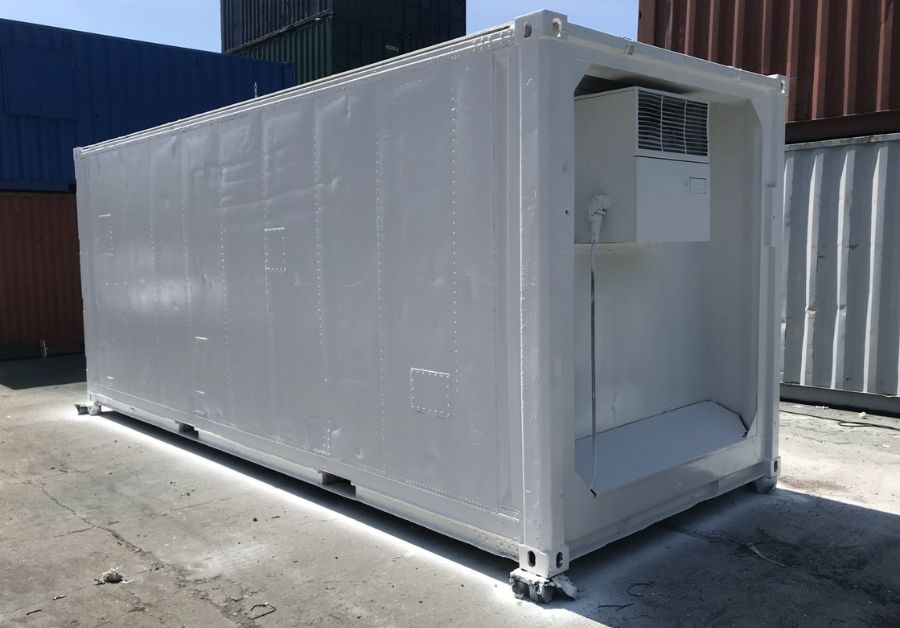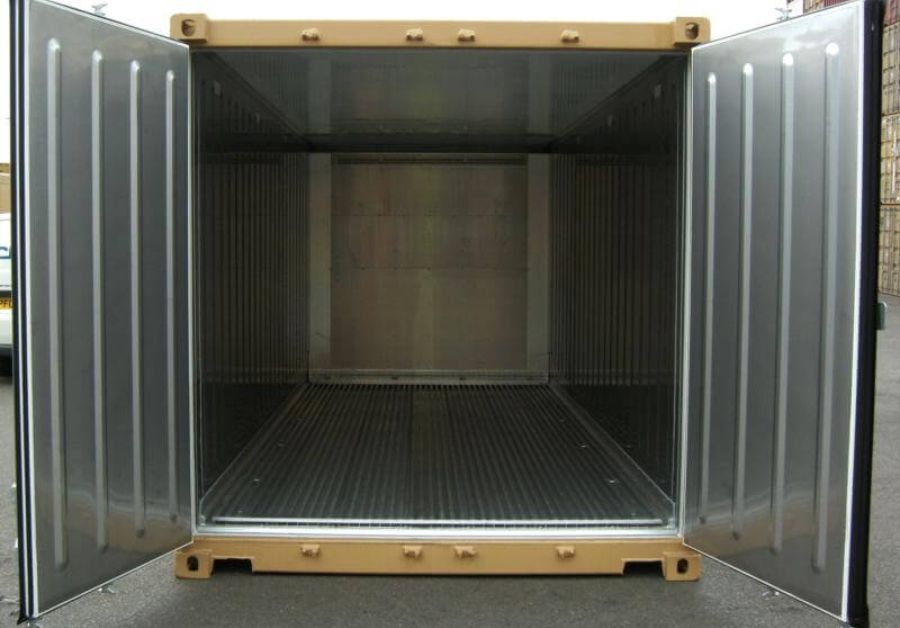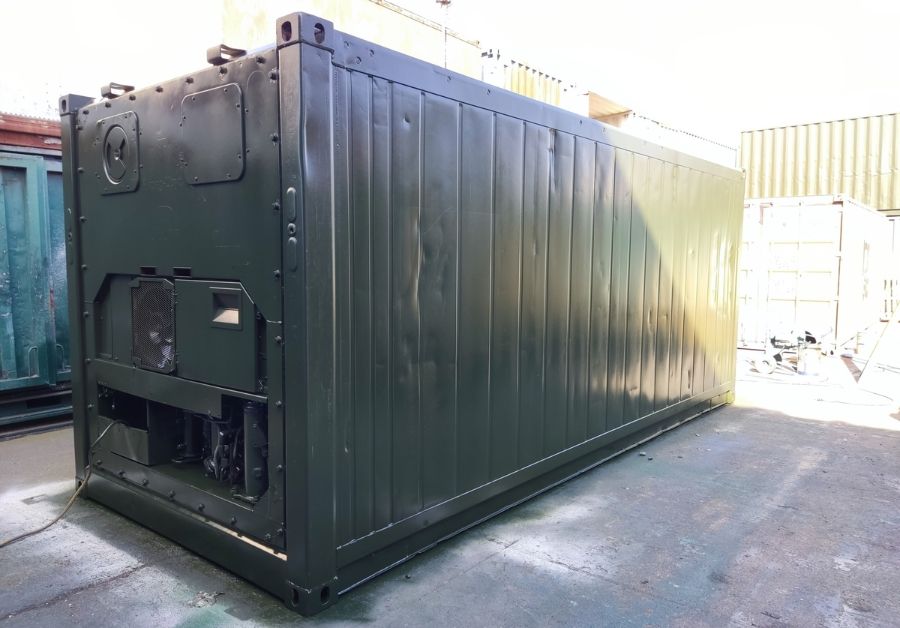What is a NOR Container? Things You Need to Know Before Using It

NOR containers are becoming a trending solution that helps businesses cut down on transportation costs while ensuring the safety of goods. Although this technical term is gaining popularity, not everyone fully understands the competitive advantages it offers. Let’s explore what NOR containers are and their importance in international transportation with Tân Thanh Container.
What is a NOR Container?
NOR stands for "Non-Operating Reefer" — a refrigerated container (reefer) used without activating its cooling system. It does not require electricity to operate the refrigeration unit.
Also referred to as RAD (Reefer As Dry), this type of container utilizes a reefer as if it were a dry container. It was developed as an optimal solution for transporting goods that may benefit from insulation but do not require active refrigeration during international shipping.

Advantages of NOR Containers
NOR containers provide several significant benefits for international logistics:
Better Cargo Protection: Made with high-grade insulation materials, NOR containers offer better protection than regular dry containers. They minimize temperature fluctuations and reduce moisture buildup, making them ideal for sensitive goods like electronics, pharmaceuticals, and canned foods.
Lower Shipping Costs: Since NOR containers do not use active refrigeration, their rental and transport fees are typically lower than those of standard reefers. This results in cost savings for businesses transporting non-temperature-sensitive goods.
Optimized Container Utilization: NOR containers help alleviate the surplus of empty reefers at destination ports, reducing storage and repositioning costs. This enables shipping lines to manage container fleets more efficiently, reducing waste and increasing operational effectiveness.
Faster Cargo Handling: Using NOR containers reduces prep and handling time, thereby enhancing shipping and delivery efficiency.
Energy Savings and Environmental Benefits: Compared to powered reefers, NOR containers consume significantly less energy, contributing to lower emissions and environmental impact.

NOR vs. Other Container Types
NOR vs. Reefer Container
| Criteria | Reefer Container | NOR Container |
|---|---|---|
| Pre-trip inspection | Mandatory | Not required |
| Suitable cargo | Fresh/frozen goods | Clean, dry, light goods |
| Dangerous goods | Depends on classification | Not allowed |
| Generator usage | May be needed | Not required |
| Available types | 20’RF and 40’RF | 40’NOR only |
| Freight rates | Higher | Lower than reefer and dry |
NOR vs. Dry Containers
| Criteria | 40’DC | 40’HC | 40’NOR |
|---|---|---|---|
| Internal length | 12.03 m | 12.03 m | 11.59 m |
| Internal width | 2.35 m | 2.35 m | 2.28 m |
| Internal height | 2.39 m | 2.69 m | 2.58 m |
| Cargo volume | 67.6 m³ | 76.2 m³ | 68 m³ |
| Tare weight | 3,740 kg | 3,830 kg | 4,520 kg |
| Max payload | 26,740 kg | 26,650 / 28,670 kg | 29,480 kg |
In essence, the 40’ NOR container offers similar capacity to a 40’DC but can carry a heavier payload and provides better insulation to protect goods.
Suitable Goods for NOR Containers
NOR containers are ideal for goods packed in cartons that are odorless, non-toxic, and do not require refrigeration. Examples include:
Electronic devices and components
General consumer goods
Books, magazines, toys, printed materials
Textiles, footwear, fashion items
Canned food that does not require cold storage
Note: NOR containers are not suitable for hazardous or temperature-sensitive goods.

Methods for Calculating Cargo Handling Time in Shipping
Whether using NOR or any type of container, understanding time calculation methods is crucial for optimizing costs and complying with transport regulations. There are two main approaches:
1. Time-Based Allocation
This is the most straightforward method with defined time limits for loading and unloading activities. For instance, a shipper may allocate 5 days for loading and 6 days for unloading, totaling 11 days for cargo operations.
In international trade, “days” can be defined differently:
Days: Calendar days.
Running/consecutive days: Continuous days including weekends and holidays.
Working days of 24 hours: A full 24-hour working day, not limited to standard business hours.
Working days: Official working days under a country’s regulations.
Weather working days: Workable port days with good weather; days with adverse weather conditions are excluded.
Weather working days of 24 hours: Each 24-hour period of cargo operation under good weather is counted as one day.
Typically, contracts in maritime transport define “weather working days of 24 hours” as the standard, and clearly specify whether weekends or holidays are included to avoid future disputes.
2. Rate-Based Allocation
This is commonly applied to bulk cargo and includes daily cargo handling limits per vessel or berth. Contracts should clearly state whether the ship’s waiting time at the berth or issues such as pending health or customs clearance are counted within the allowed cargo handling period.
Force majeure events (e.g., strikes, war) should also be addressed explicitly for potential exemptions.

NOR (Non-Operating Reefer) containers are an optimal solution in international maritime shipping, helping to address the reefer container imbalance. Thanks to their superior insulation and cost-efficiency, they are ideal for transporting dry goods that still require protection from temperature and humidity fluctuations.
With over 30 years of industry experience, Tân Thanh Container proudly provides high-quality containers that meet international standards. We are committed to offering reliable products with dedicated warranty services. Our experienced team is ready to assist you in selecting the most suitable container for your transportation needs. Contact us today for the best pricing offer!
Address: No. 14, Street No. 15, Quarter 4, Linh Trung Ward, Thu Duc City, Ho Chi Minh City
Phone: 0968 039 939
Email: info@tanthanhcontainer.com
Website: https://tanthanhcontainer.com/







